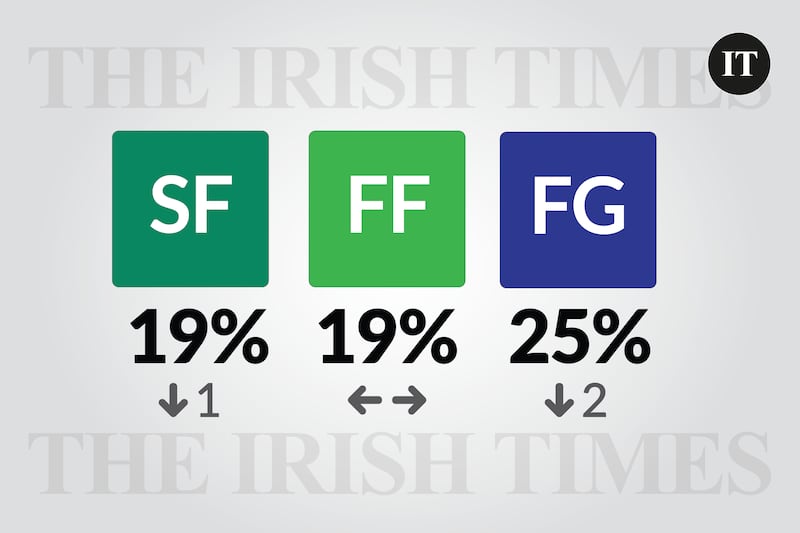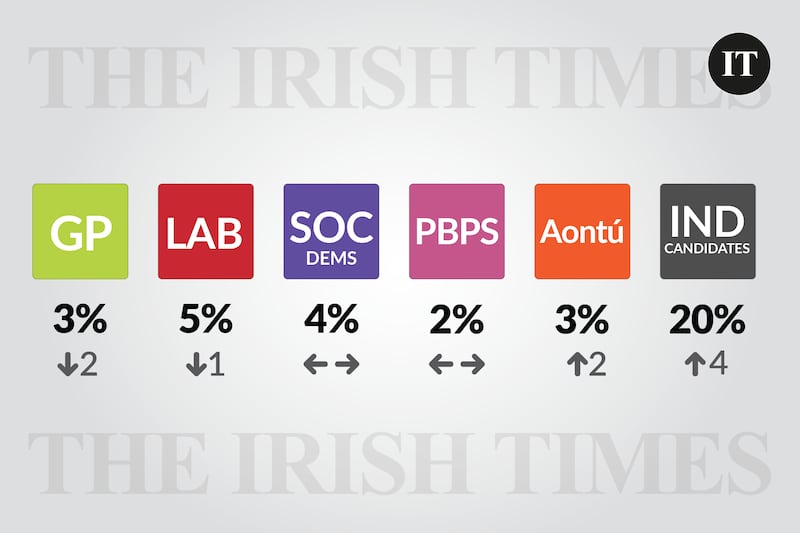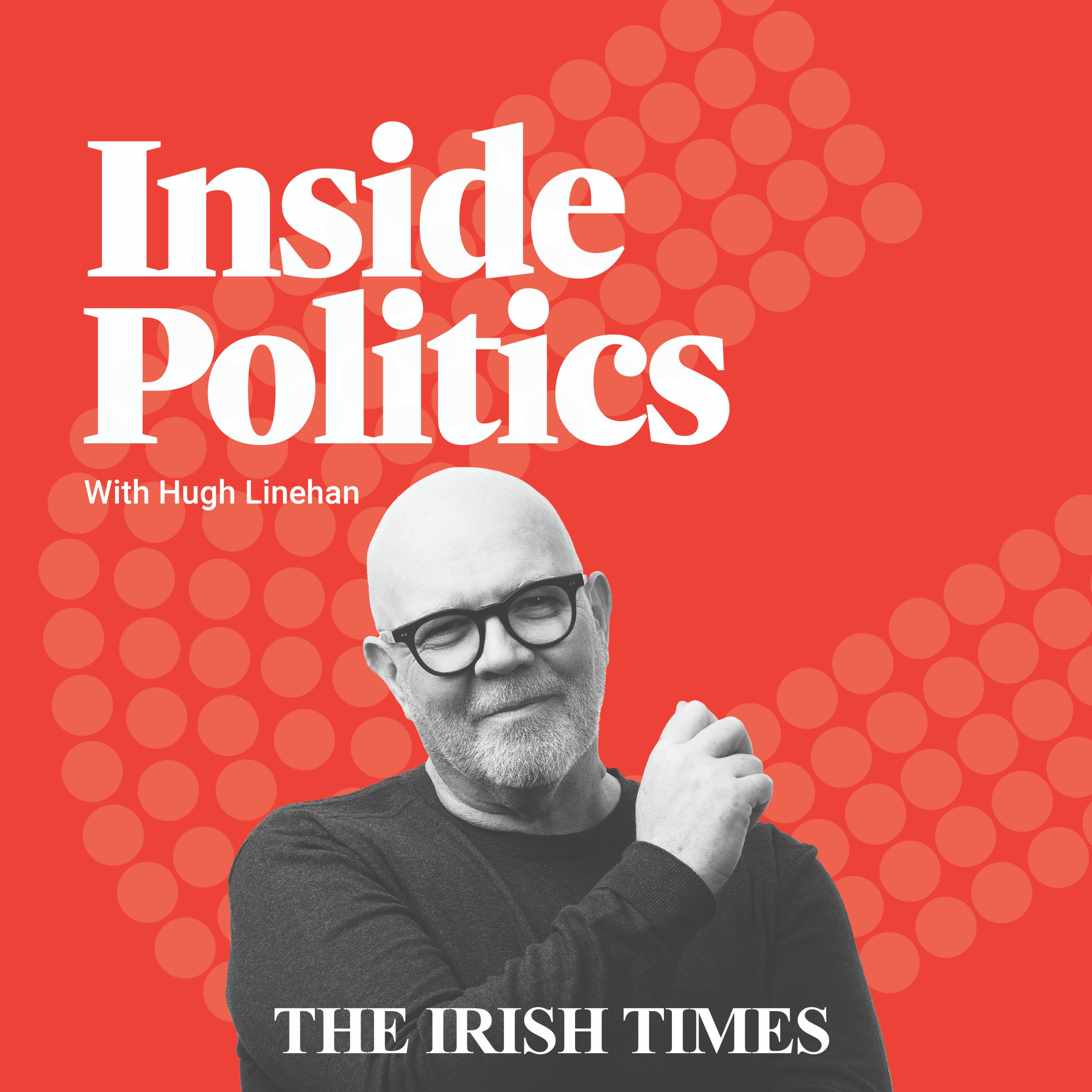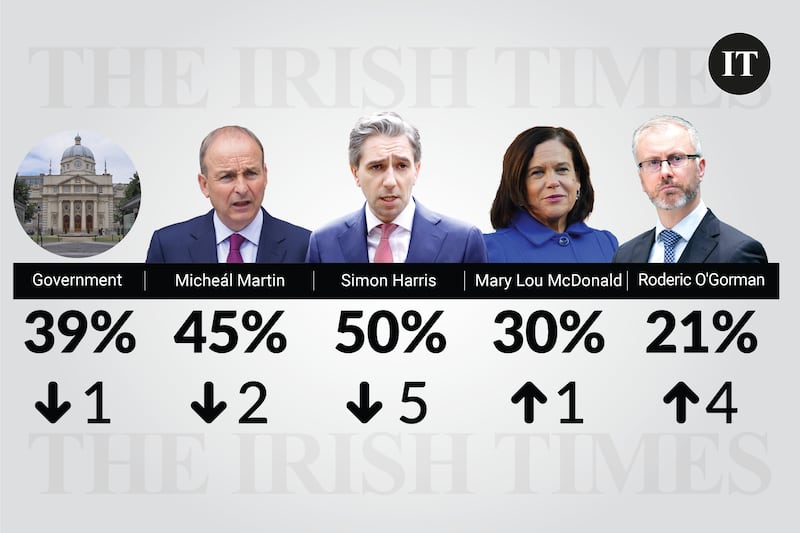The first opinion poll taken since the general election was called suggests that Fine Gael retains a clear lead over its rivals in Fianna Fáil and Sinn Féin but with some slippage in the party’s numbers and approval rating for Simon Harris. With many voters unlikely to finally make up their minds until closer to election day, the race seems set to tighten further.
Fine Gael is well out in front on 25 per cent and Harris remains the most popular party leader with a 50 per cent satisfaction rating. But its lead over Fianna Fáil has been cut from eight points in September to six today and with so many new Fine Gael candidates up against proven vote-getters in other parties, things could get even tighter.
Either way, with Irish politics marked by extreme volatility in recent elections, it is too early in this campaign to be in any way definitive about the outcome. Fine Gael is six points up at half-time; that’s a decent lead but it’s all still to play for.


One clear trend, though, is the growth in support for the Independents. Our poll does not disaggregate support for the Independent Ireland (II) party from other independents — our research shows that while II is registered as a party, voters still think of them as Independents — but with a growth of four points today to 20 per cent, the Independent bloc in the next Dáil is set to be sizeable.
READ MORE
Could they be the king makers? If they can push up these numbers even a little, Fine Gael and Fianna Fáil might be close enough to an overall majority without any help; though the security of a decent majority rather than a wafer-thin one is always appealing. In any event, there is likely to be a range of Independents — including, perhaps, the Independent Ireland ones — who are available to serve. In return for a deal, of course.
A further point to note that could be of significance in the post-election landscape is the disequilibrium between Fianna Fáil and Fine Gael. If these numbers were replicated on election day, would Fine Gael offer its smaller partner a rotating taoiseach? And what if they didn’t? But we’re getting ahead of ourselves.

Poll: Support for independents on the rise
Sinn Féin is likely to take some heart from today’s findings. Though the party has dropped by a point since September, the headlong nosedive of its poll numbers that had been under way for the past year seems to have stabilised. Observers have noticed a pep in the step of leader Mary Lou McDonald since the campaign started and she can take heart from the fact that Sinn Féin remains one of the big three. More worrying for her is the reappearance of an old problem — the preponderance of younger working-class voters among Sinn Féin supporters, who historically tend to turn out in lower numbers than other cohorts.

[ A pinch of political salt: your guide to reading election budget plansOpens in new window ]
The smaller parties are jockeying for advantage, notice and survival. The prospects have darkened a little for the Greens, down by two points to 3 per cent, and brightened for Aontú, up by 2 to 3 per cent. But just like Labour (5 per cent), the Social Democrats (4 per cent) and People Before Profit (2 per cent), what matters for the small parties is not so much these figures, it’s how their candidates are faring in the limited number of constituencies where they are competitive for a seat. Yes, it’s better to have your numbers up than down, but national polls aren’t the best guide to their chances.

Poll: Support for independents on the rise
One thing that today’s numbers demonstrate is the importance of how voters feel about their financial circumstances. Asked what is the issue that will have the most influence on their vote, 30 per cent of voters — by some distance the largest single cohort — mention the cost of living. This chimes with what politicians in all parties are saying is their experience on the doorsteps.
Some voters will probably be grateful for the cash payments the Government allocated in the budget and which are now being made. Others, however, may blame them for inflation in the first place. That seems to be what happened in the United States.
Other significant issues are house prices (17 per cent) and rent (6 per cent). Is it too much to extrapolate that if you are concerned about house prices (rather than rent) you are more likely to favour subsidy schemes like Help-to-Buy, to which Fianna Fáil and Fine Gael are committed but several Opposition parties want to scrap? Perhaps.
Health is cited as the number one issue for 18 per cent; immigration just 9 per cent. For an issue that was to the fore for much of the first three-quarters of the year, it has yet to cut through in this campaign. Perhaps the toughening of all the main parties’ stances has taken the fizz out of it. Climate is mentioned by just 4 per cent; that’s not great news for the Greens.
Though the numbers show limited changes since September, that must be set against the history of volatility and sudden swings that have emerged in many recent Irish election campaigns. There is little reason to think this will be any different. If so, the election is likely to be won and lost in the remainder of the campaign.
- Sign up for push alerts and have the best news, analysis and comment delivered directly to your phone
- Join The Irish Times on WhatsApp and stay up to date
- Listen to our Inside Politics podcast for the best political chat and analysis
- Sign up to our Inside Politics newsletter to get the behind-the-scenes take direct to your inbox













